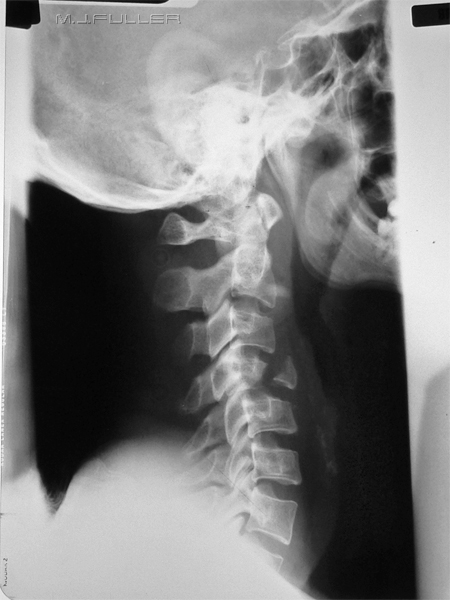under construction
Introduction Diagnosis of cervical spine injuries is an important part of the role of a trauma radiographer. This page identifies the appearances of common cervical spine fractures.
Teardrop Fracture  |
There is a large triangular antero-inferior fracture derived from the body of C4. The fragment is displaced Anteriorly and, more importantly, the remaining posterior body of C4 is displaced posteriorly into the spinal canal.
There is widening of the facet joint between C4 and C5.
There is a kyphotic deformity at the level of the fracture.
There is some degree of disruption virtually all of the spinal alignment lines.
These features are typical of a flexion teardrop fracture which most commonly occurs at the C5 level. This fracture can be very unstable. A major component of the instability resulting from this fracture is due to disruption of the facet joint capsules and other posterior ligamentous structures.
The displacement of the posterior vertebral fragment into the spinal canal typically produces an anterior spinal cord syndrome characterised by quadriparesis and loss of temperature and pain sensation. |
|
|
